Last Updated on February 22, 2023
If you’re a betta owner, you might wonder whether adding live aquatic plants to your aquarium is a good idea.
Live plants can add beauty to your fish tank and boost your fish’s health, but they also require maintenance and care.
In this article, we’ll answer the question, “Are live plants good for betta fish?” by discussing the benefits and drawbacks of having live plants in your tank.
We’ll also provide suggestions for the best plants to add to your aquarium and share some tips for maintaining a healthy aquatic environment for your fish.
Table of Contents
Do bettas need live plants?
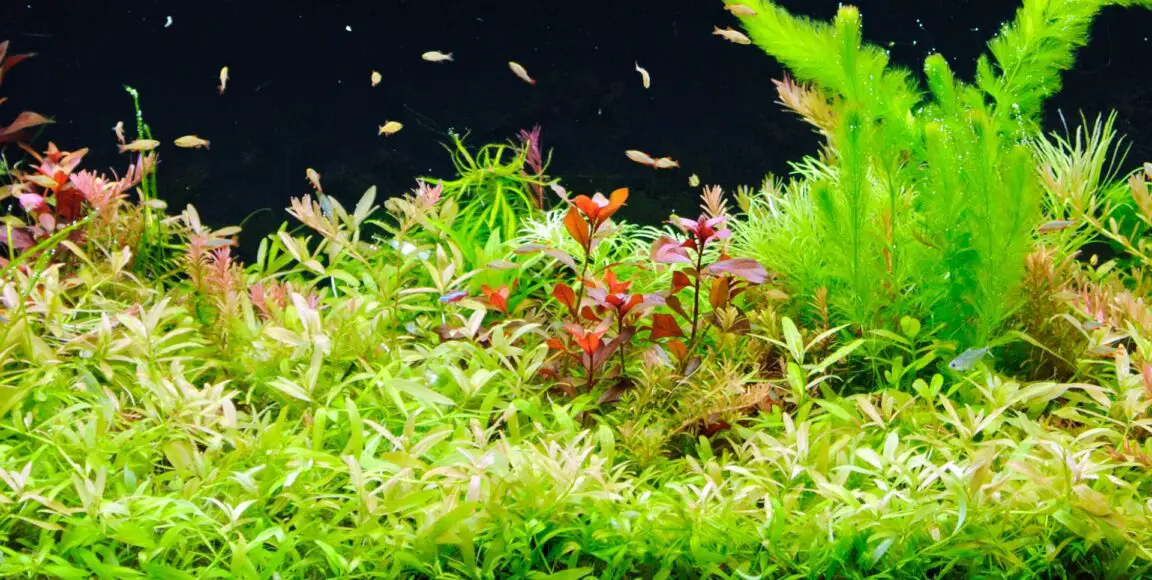
Betta fish plants are a great addition to your aquarium and offer many benefits. But, living plants in your tank also have some drawbacks.
Let’s discuss the pros and cons of having an aquatic plant.
The Good
They stimulate natural behavior
Live aquarium plants can help create a more natural environment for your betta fish.
They provide your fish a place to hide, rest, and explore, which can help reduce stress and promote natural behavior.
In their natural habitat, bettas live in heavily planted areas. Adding plants in your tank can help mimic this environment.
Betta fish are naturally curious and enjoy exploring their surroundings.
So, having live aquarium plants in their tank can provide the perfect stimulation to keep your betta fish healthy and happy.
They keep the water oxygenated
One great advantage of having adding betta fish plants is that they help oxygenate the water.
Live tank plants absorb carbon dioxide, ammonia, and other toxins while producing oxygen through photosynthesis.
This process helps to maintain a healthy and balanced ecosystem in your betta tank.
A well-oxygenated tank is essential for betta’s health, and live plants provide a natural way to keep the water oxygenated, promoting optimal health for your fish.
On the other hand, fake plants, like silk plants, don’t hold this power and are harmful to your pet.
Provide a suitable hiding spot
Betta fish require a safe and comfortable hiding place when they feel stressed or threatened.
Plants can provide your betta with a natural hiding spot that they can retreat to when they need to rest or feel safe.
These plants can also help to reduce stress levels by providing a safe and comfortable environment for your fish.
Acts as natural filtration
Betta fish plants can act as a natural filtration system for your tank.
They absorb harmful toxins such as ammonia, nitrates, and nitrites produced by fish waste, uneaten food, and decaying plant matter.
The plants convert these toxins into nutrients they can use for growth, helping keep the water in your tank clean and healthy.
This natural filtration system is a great way to maintain the good water quality.
Controls algae buildup
One most common problems is algae growth in aquariums.
Algae can be unsightly and harmful to your fish if it gets out of control.
Live plants can help control algae buildup by competing with it for nutrients and blocking out excess light.
This natural method of algae control is safe and effective, and it helps to maintain a clean and healthy environment for bettas.
Make your tank more visually appealing
Adding live plants to your tank is an excellent way to enhance its aesthetic appeal.
They come in various shapes, sizes, and colors and can create a visually stunning aquatic landscape for your bettas to enjoy.
The plants provide a natural and aesthetically pleasing environment that can be customized to fit your personal preferences.
Overall, live plants are an essential addition to any betta tank.
They provide numerous benefits, making them an excellent investment for betta owners.
The Bad
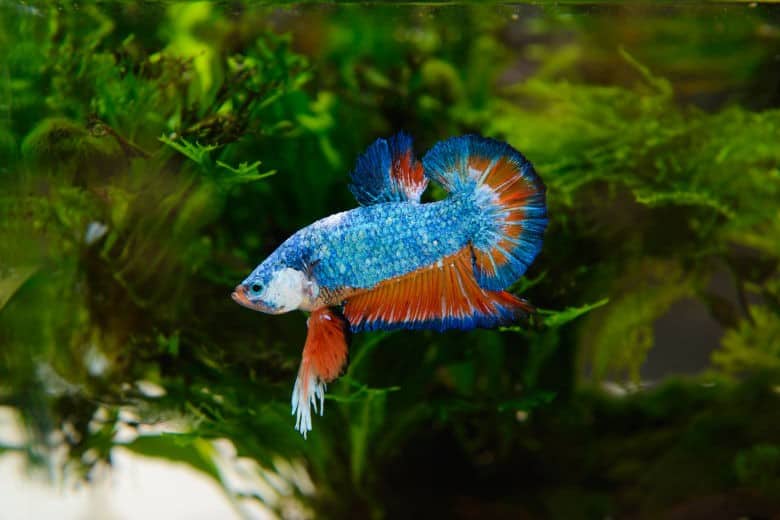
Additional maintenance
Live plants in fish tank require additional maintenance than artificial ones.
They must be trimmed regularly to maintain their shape and size. If left unattended, they can overgrow and consume too much space, blocking the light from reaching other parts of the tank.
It’s also necessary to fertilize live plants occasionally to provide them with the nutrients needed for growth.
When cleaning, dead or decaying leaves should be removed, or they will become a breeding ground for bacteria and parasites.
The requirements are insane!
Each live plant species has unique requirements, such as lighting, temperature, pH, and nutrient levels.
For instance, some plants thrive under low-light conditions, while others require high-intensity light to grow.
If not adequately catered to, live plants can deteriorate, affecting the aquarium’s water quality and overall health.
New betta owners may struggle to maintain the ideal environment for live plants, which is why research is essential before making any additions to the tank.
They can rot and decay
Live plants that are not adequately cared for can rot and decay, creating many issues.
The decaying plant matter produces harmful toxins, harming the fish and creating an unfavorable environment.
Additionally, dead plant material can lead to excess waste and debris, contributing to poor water quality and health problems for the fish.
Regular trimming and maintenance, coupled with an efficient filtration system, can prevent the rotting and decaying of live plants in a tank.
Incompatible with your fish
Not all live plants are suitable for betta fish.
Some plants can be poisonous (I’ll give some examples later), while others may have rough edges that can damage the fish’s fins and scales.
Certain plants can also change the pH level of the tank water, which can be detrimental to the fish’s health.
Therefore, you must research the compatibility of live plants with betta fish before purchasing.
They can be more expensive than fake plants
If you’re on a budget, this can discourage you from investing in betta fish plants.
Additionally, they have a shorter lifespan than artificial ones.
This means you’ll need to replace them often, which can add to your cost over time.
Best plants for betta fish
There are many different plant species out there but here are some of the best betta fish plants that will make your aquarium hobby a joyful one!
What live plants are good for betta fish?
Now that we’ve explored the pros and cons of having plants for betta fish tank, let’s take a look at some of the best ones to buy:
Hornwort

Hornwort is a floating plant that can make your betta aquarium lush and attractive.
It’s an excellent oxygenator that requires minimal care, making it ideal for beginners.
Hornwort doesn’t require a substrate; you can plant it directly in the substrate or let it float freely in the water.
It does well in medium to high-lighting and gentle water flow. With proper care, it can grow up to 10 feet in length.
This plant may require regular trimming, but cutting Hornwort is very easy.
Amazon Frogbit

Amazon frogbit is a floating aquatic plant perfect for your fish tank.
Its lily pad-like shape provides a natural and soothing look to your aquarium.
Besides, it also helps maintain water quality by absorbing nitrates and other waste products produced inside your tank.
To take care of this plant, ensure you provide enough light. It prefers moderate to high lighting and a pH level of 6.0-7.5.
Additionally, ensure that the plant’s top part is always dry to avoid rotting.
It’s a low-maintenance plant that grows quickly, so trim its roots regularly to avoid overgrowth.
Water Wisteria
Wisteria is a popular hardy plant that is perfect for new betta owners.
It’s easy to grow and adapt to different water conditions, making it an excellent addition.
This live plant is known for its lush green foliage, and it can grow tall and bushy, providing a natural and aesthetically pleasing environment for your betta.
To care for water wisteria, ensure it’s deeply rooted into the gravel or substrate.
Plant the stems apart from each other and give them room to develop roots.
It’s important to trim any damaged leaves to ensure the plant grows healthily.
You won’t have to use fertilizer for it to grow. Just make sure to provide enough lighting and a suitable pH level of 6.5-7.5.
Water Sprite
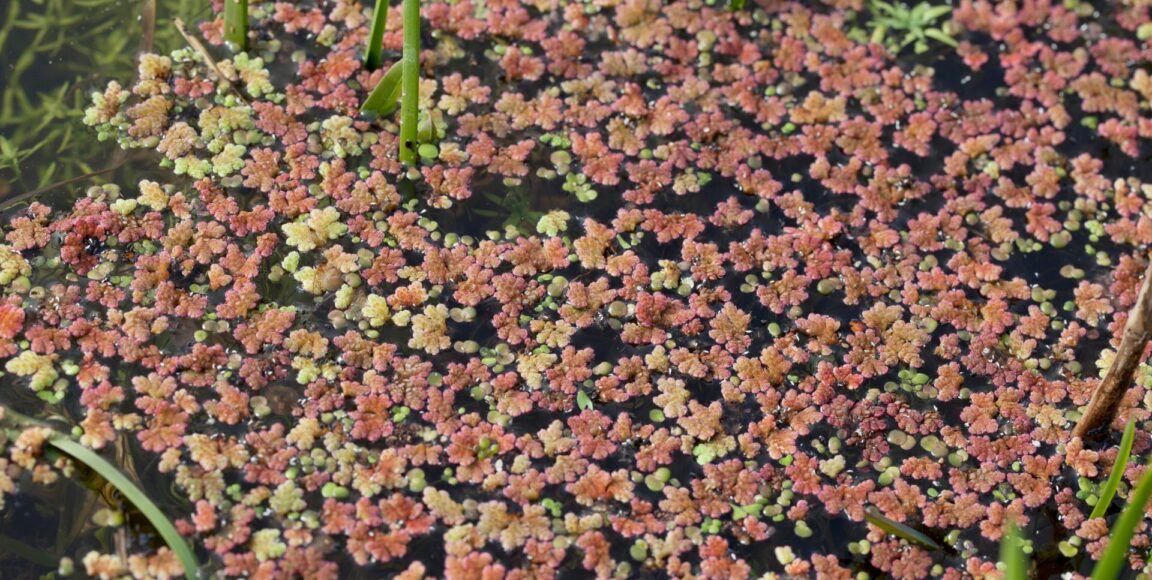
Water sprite, or water fern as others call it, is an aquatic plant from the Ceratopteris family.
Like the plants above, it’s popular because it offers numerous benefits.
Water sprite can provide shelter and hiding places for bettas, which help them feel secure and reduces stress.
Additionally, it can help maintain the water quality in your aquarium by absorbing carbon dioxide, reducing the growth of harmful algae, and providing oxygen.
Taking care of water sprite is relatively easy. It is a hardy plant that can grow in various water conditions and lighting levels.
But you’ll need to regularly trim the plant’s outer stem to prevent it from becoming too large and overtaking your tank.
Anubias
Anubias is a genus of plants with broad and dark green leaves.
These plants are perfect for bettas because they provide a comfortable spot for the fish to relax and rest.
Anubias thrives in low light conditions and is easy to care for, making it a great choice for beginners. It also has a slow growth rate, meaning it will require minimal trimming.
To care for Anubias, attach it to driftwood, rocks, or other aquarium decorations using a fishing line or thread.
Avoid burying the rhizome (the thick stem from which leaves and roots grow) in a substrate, as this can cause the plant to rot.
Java Ferns
Java Fern is a plant known for being low-maintenance. It originated in Southeast Asia.
It is hardy, adaptable, and can improve the water quality of your tank.
Java Fern is an epiphyte, which means it doesn’t root in the substrate. Let it float freely or attach it to a surface like rock or driftwood.
It prefers low to moderate light and appreciates regular water changes and occasional fertilization.
Aside from Java Fern, another option that is equally simple to grow and your betta fish would love is the Java Moss.
Amazon Sword Plant
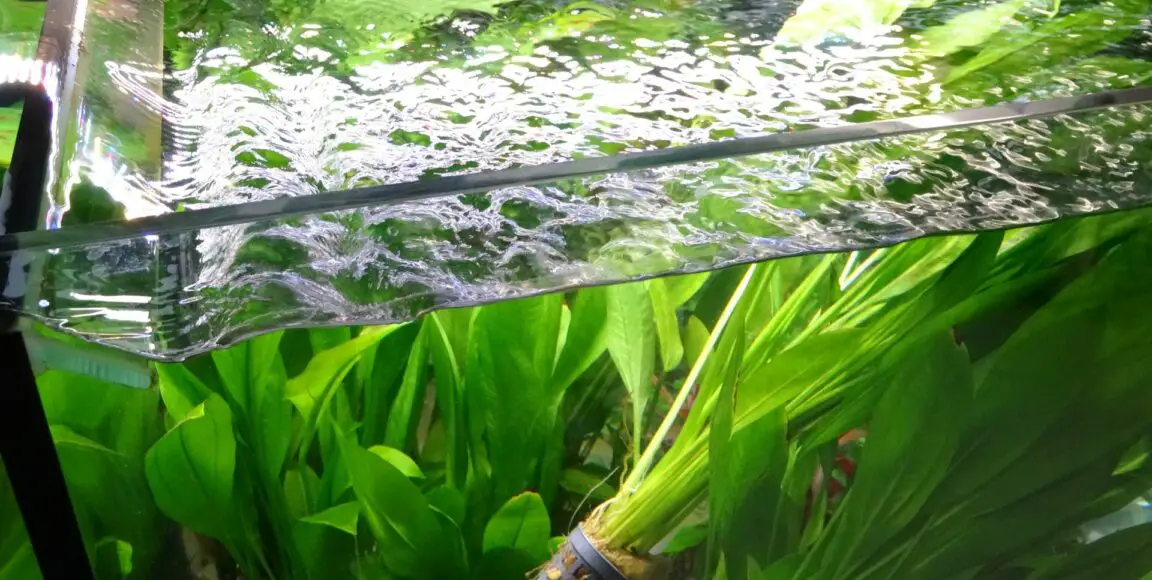
Amazon Sword Plants are plant species that can be found in Central America, North America, and Cuba.
It’s an excellent addition to fish tanks as it provides oxygen, and its leaves serve as a perfect hiding place.
To care for it, place it in a well-lit area, use a nutrient-rich substrate, fertilize regularly, prune and thin out leaves, and ensure the tank is big enough to accommodate its size.
Marimo Moss Ball
Marimo moss balls are a type of aquatic plant that resemble green fuzzy balls.
Marimo moss balls are also easy to care for, as they require low to moderate light levels and can survive in a wide range of water parameters.
Just make sure to place them away from direct sunlight so they won’t turn brown.
They are a great addition to fish tanks because they improve water quality and provide a natural source of entertainment for bettas.
They should also be gently squeezed to remove any dirt inside.
Lucky Bamboo
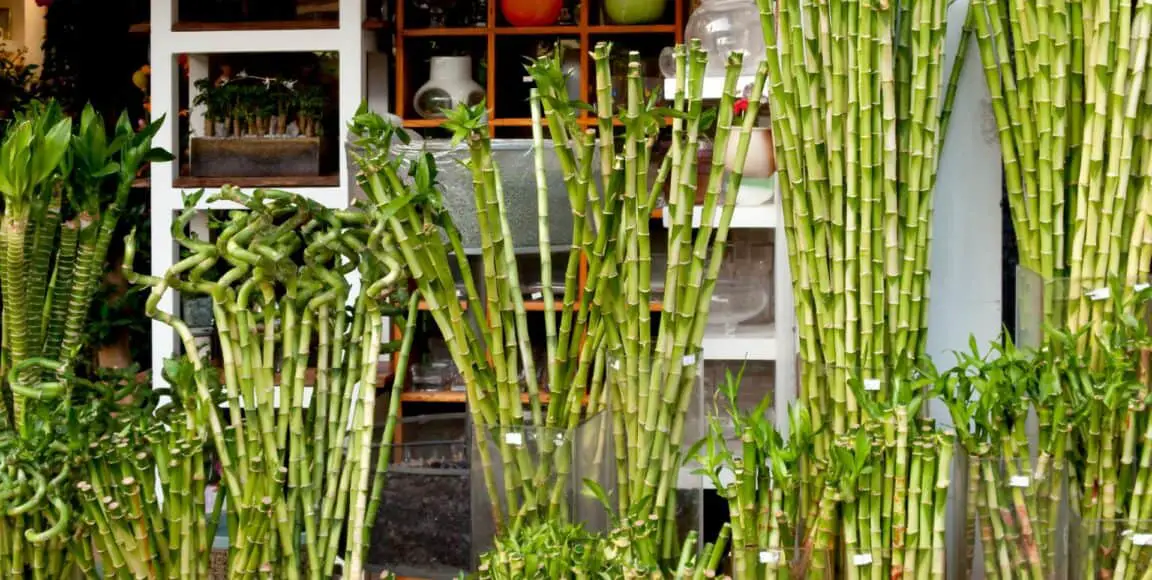
Lucky bamboo is a plant believed to bring good fortune and prosperity to Asian culture.
It is commonly used as a decorative plant in homes and offices.
Lucky bamboo is also a popular choice for betta fish tanks because it provides natural filtration and oxygenation to the water.
In addition to being aesthetically pleasing, lucky bamboo is easy to care for.
It can thrive in various lighting conditions and doesn’t require much maintenance.
To take care of lucky bamboo, submerge its roots and half of its stem in a tank with clean water.
Aquatic Banana Plant
The aquatic banana plant, or Nymphoides aquatica, is a popular aquatic plant often used in aquariums.
It originated in North America and grows in marshy areas, ponds, and lakes.
Like the other plants above, the aquatic banana plant is easy to tend to and is perfect for beginners.
In addition, the leaves of this plant are broad and slightly curved, providing a resting spot for bettas to rest on.
Related: 15 Best Live Plants for Betta Fish in Their Tank
What live plants are poisonous for betta fish?

While many plants are suitable for betta tanks, some can be toxic and harmful to your fish.
Here are some of the poisonous live plants that betta fish owners should avoid adding to their aquariums:
Peace Lily
Peace Lily is a popular houseplant that is toxic to betta fish.
This plant has dark green leaves that are large and shiny, with white flowers that resemble calla lilies.
Although the plant doesn’t directly harm your betta, its sap has calcium oxalate crystals that can badly affect your digestive system when ingested.
Water Lettuce
Water lettuce is a floating aquatic plant found in freshwater.
Besides this plant being big, which can make it difficult for betta fish to access the water surface, it also contains saponin.
Saponins can harm your betta fish if ingested and have been used in the old times to poison fish.
Water Hemlock
Water hemlock is a highly toxic plant in wetlands and marshy areas across North America.
It can grow up to seven feet tall and has clusters of small, white flowers that bloom in the spring.
The roots of water hemlock contain a lethal poison called cicutoxin, which can cause seizures, paralysis, and death in fish, including bettas.
What do live plants need to thrive?
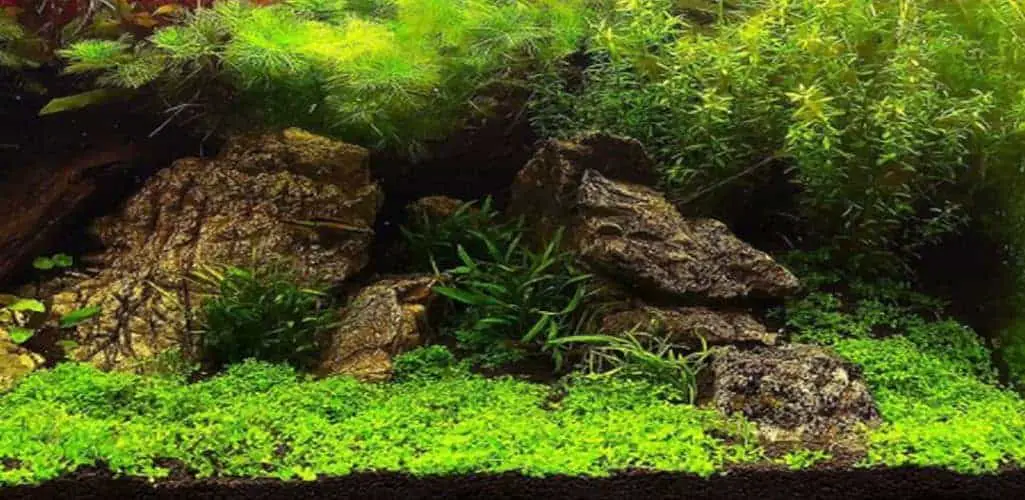
Plants are great for your tank. But if you want to maintain them, you’ll need to do your and identify the specific needs of the plants you choose to ensure their health and vitality in the tank.
Here are five essential things that plants need to thrive in a betta tank:
- Sufficient light: Most plants require moderate to high amount of light to photosynthesize and grow properly. The amount of light needed will depend on the specific plant species, so it’s important to research the light requirements for each plant.
- Proper Water Conditions: The water conditions in the tank must be suitable for the plants to thrive. This includes pH level, water hardness, and temperature. Again, the specific needs will vary depending on the plant species, so it’s crucial to research and ensure that each plant’s water conditions are within the acceptable range.
- Nutrients: Plants require various nutrients to grow, including macronutrients like nitrogen, phosphorus, and potassium, as well as micronutrients like iron, calcium, and magnesium. These nutrients can come from fish waste, plant fertilizers, or substrate supplements.
- Suitable substrate: The substrate is the material that lines the bottom of the tank and provides a base for the plants to root into. It is important to choose a substrate that is suitable for your specific plants, as some plants require a specific type of substrate, such as sand, gravel, or clay.
- Carbon dioxide: Like land plants, aquatic plants need carbon dioxide to photosynthesize and grow. Betta fish and other marine animals produce some carbon dioxide naturally, but it’s often not enough to support the growth of plants. It’s important to ensure enough carbon dioxide in the water for the plants to thrive.
Related: Do Betta Fish Like Live Plants
Final thoughts

So are live plants good for betta fish?
Absolutely! Adding live plants to the betta fish tank adds an extra layer of aesthetics and keeps the water clean.
Besides, most plants help produce more oxygen, reduce algae growth, and provide hiding places for your betta.
If you plan to buy plants for betta fish that aren’t included in the list above, do your research, as not all are safe and beneficial for your pet fish.
That’s all, and happy betta fish keeping!
